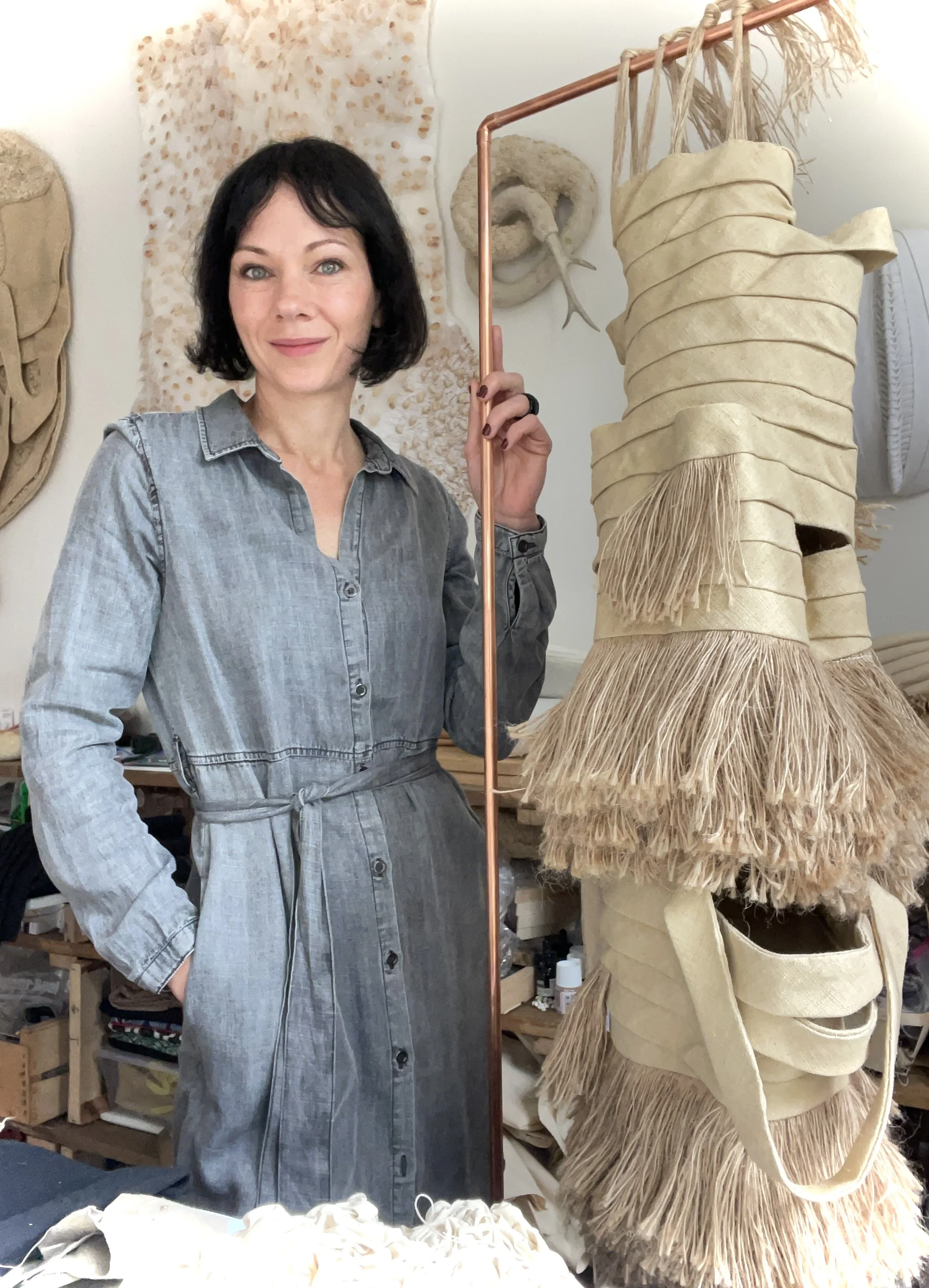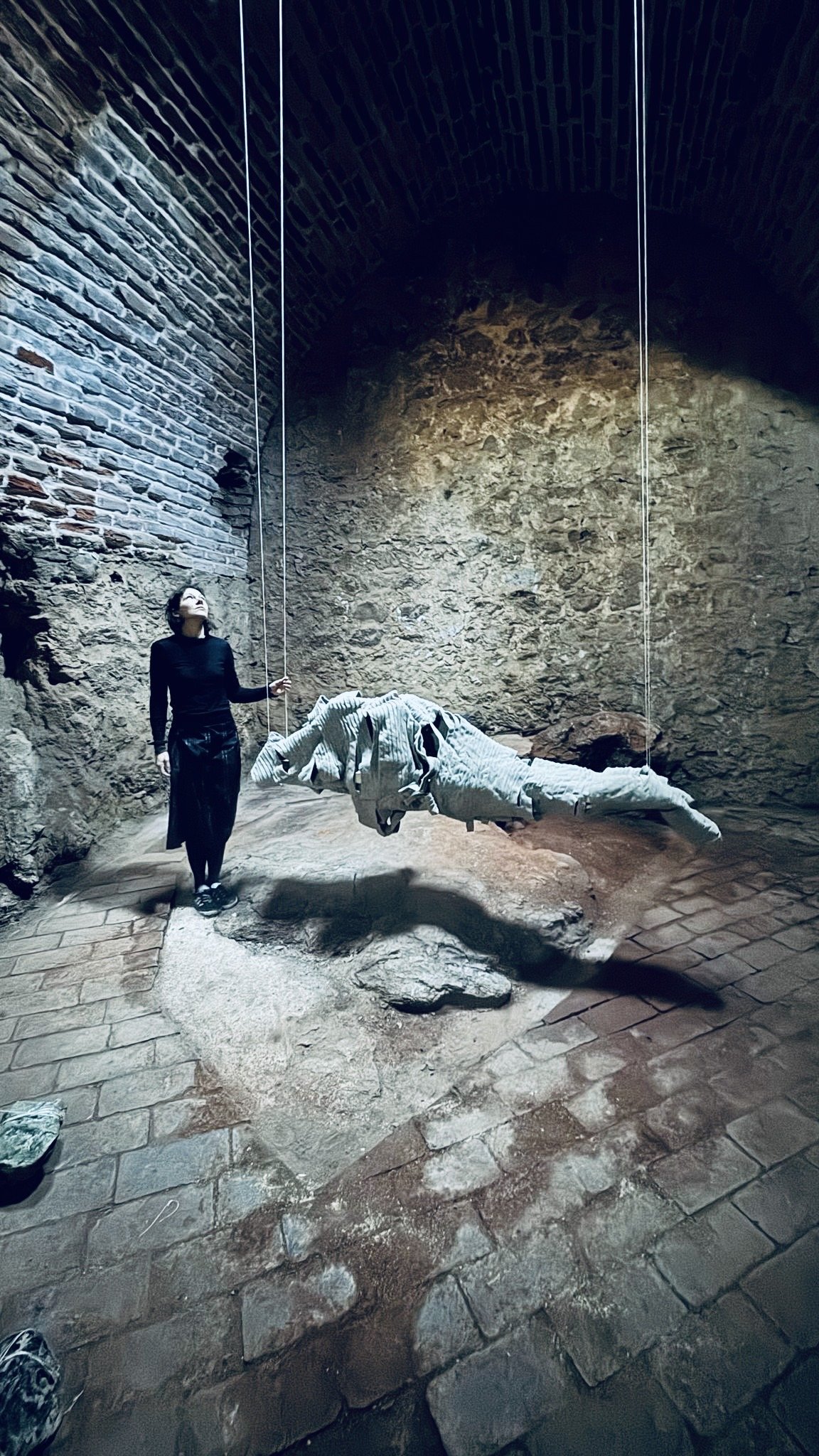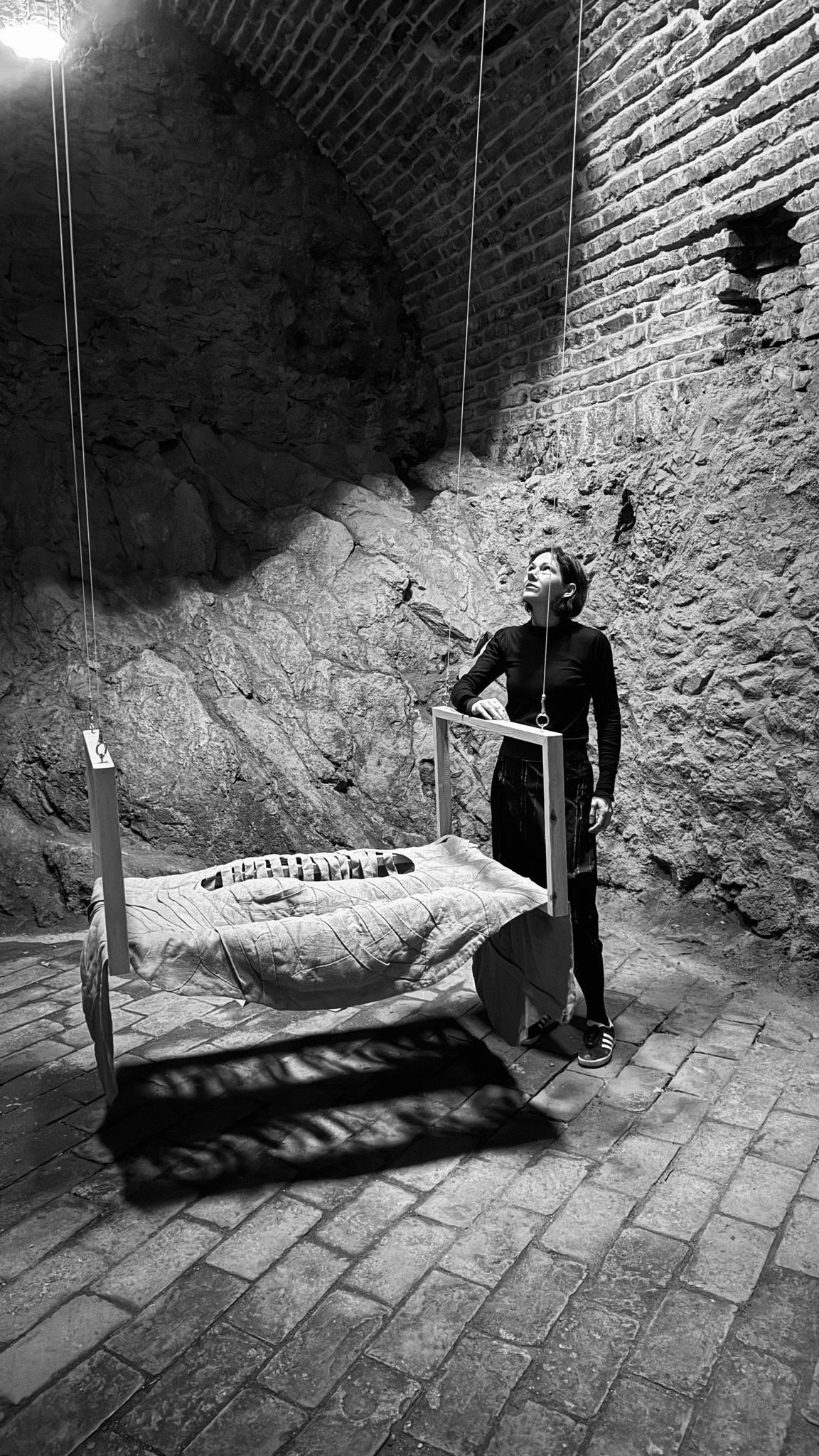Honoring the Rhythms of Transformation: Five Questions with Tina Marais
Introduction by Maria Guerrero
It was fascinating to explore the breadth of work by visual artist Tina Marais with a focus in her series “Sleep in the bed that you made”. One of her installations, “Sleep in the bed that you made III” was part of a powerful exhibition featuring both compelling artwork and a remarkable ensemble of artists. SPACES BETWEEN was held at Florida CraftArt gallery in St. Petersburg, in partnership with the Surface Design Association. The show was juried by the formidable Akiko Kotani—whom I had the great pleasure of meeting a while back, and whom many of you may remember as the 2023 Florida Prize winner at the Orlando Museum of Art. Through this interview by Zeny Recidoro-Fesh, I invite you to trace the origin of the series and the world of Tina Marais.
Tina Marais
Textile artist Tina Marais was born August 23, 1977 in Cape Town South Africa to Evert Groenewald, who served as the Chief of Naval Operations in South Africa before his retirement in 1999, and Retha Groenewald. She established her art career in Canada from 2011 to 2024, where she moved with her family in 2008. Her current art practice and residence is in Lyon, France. Marais earned a Visual Communication degree from Open Window Art Institute in South Africa in 1997, and an MFA in Fiber and Material Practices from Concordia University, Montréal in 2022. She has participated in over 70 group exhibitions and biennials in Canada, the United States, Brazil, Belgium, China, Ukraine, Switzerland, South Korea, South Africa, Spain, Poland, France, Colombia, Lithuania, Slovenia, Australia, Portugal, and Uruguay.
Marais’ fabric sculptures and installations are tactile and rhythmic. Each line, curve, and imprint of a piece serves as an archive of both personal and collective histories. In her Artist Statement, Marais wrote:
“Reconstruction is my gesture of hope. It is not a return, but a reaching—a reconstruction of fragments into something that sustains. In the act of creating, I aim to honour what has been lost while gesturing toward the possible. My practice is both a reckoning and an invitation: to imagine futures yet unwoven, where systems of belonging replace those of division, and where every thread contributes to the delicate, enduring fabric of life.”
Women in the Arts contributor Zeny Recidoro Fesh got in touch with Marais from her studio in Lyon, France to talk about the rhythms of memory, space, and touch through textiles.
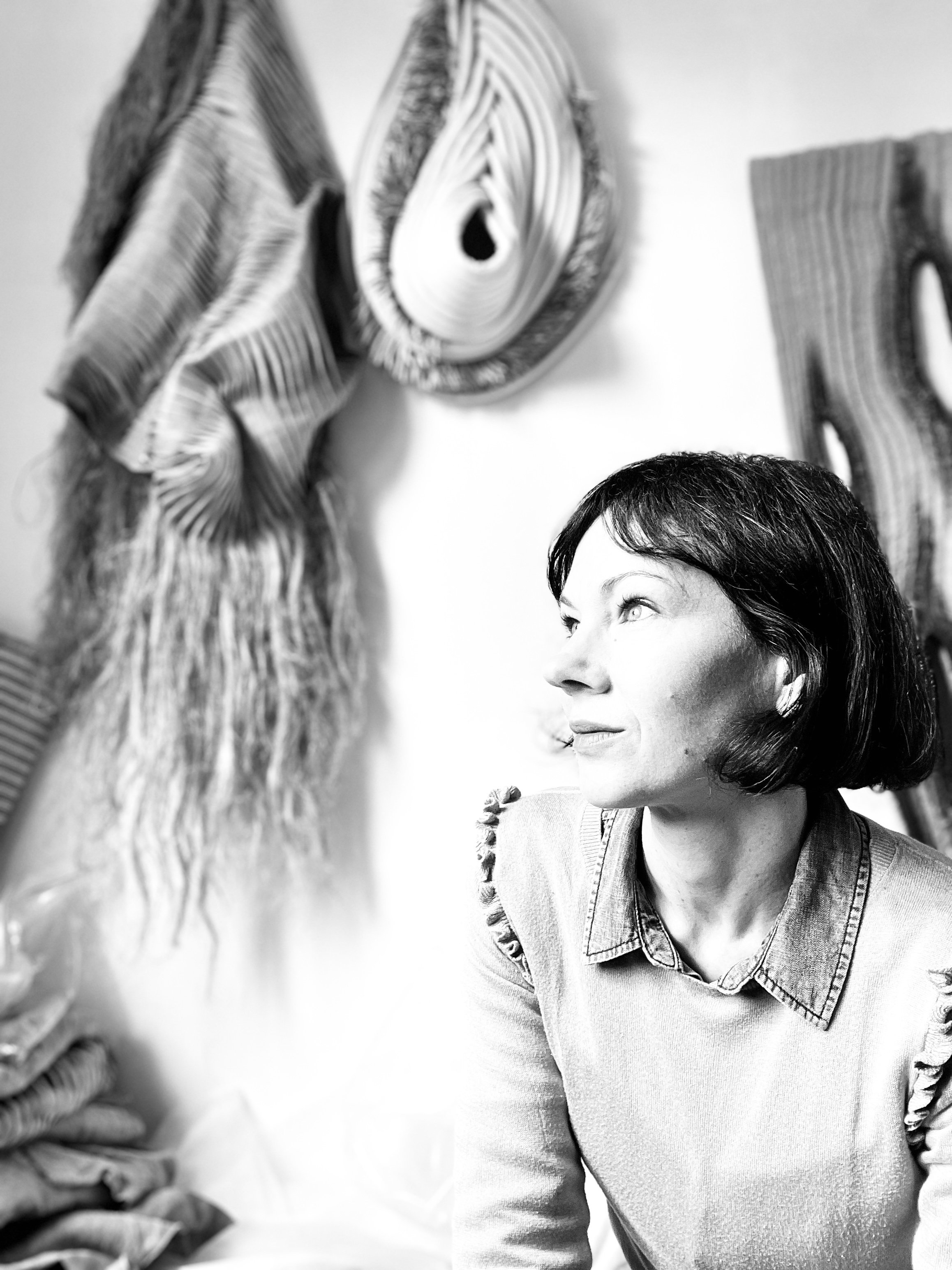
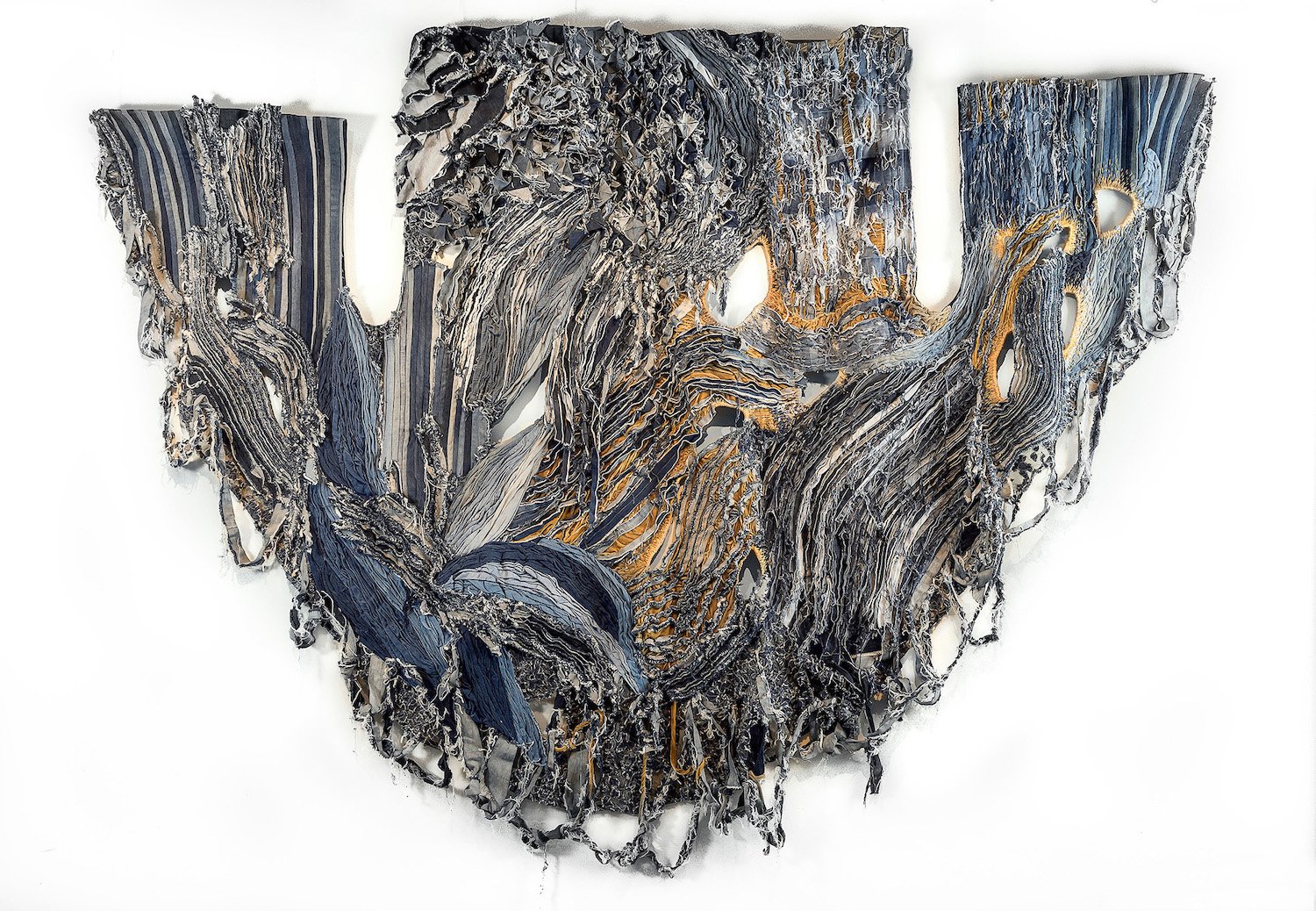
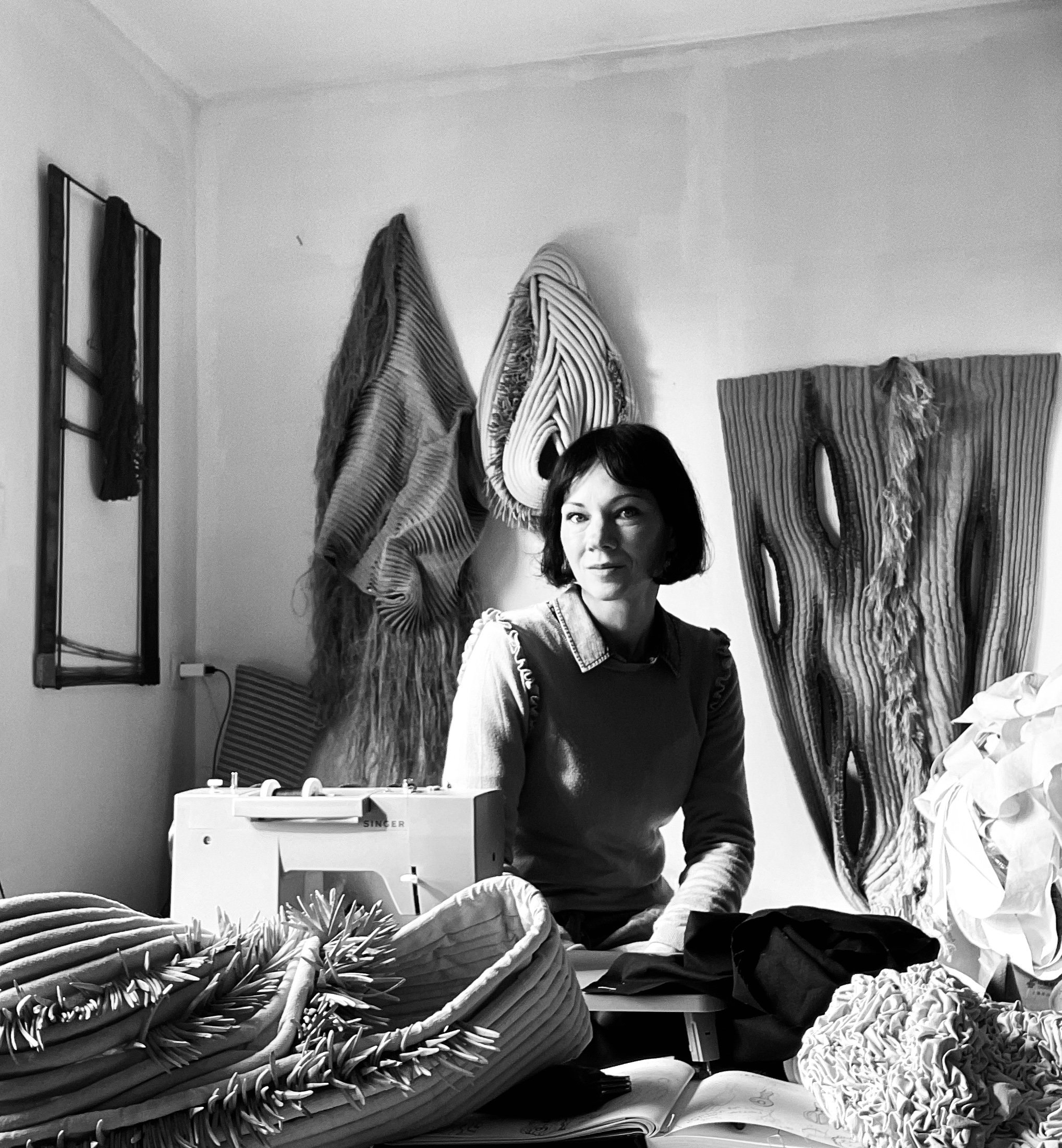
Zeny Recidoro Fesh: What was your earliest memory of being drawn to or enchanted by textiles? Was there a specific starting point, a piece of clothing or an artwork or tapestry, that indicated the beginning of your art practice?
Tina Marais: For as long as I can remember, textiles have spoken to me in their quiet, tactile language—an intimate thread running through the fabric of my life. My earliest encounters with cloth were layered with enchantment: the shimmering silk brocade of vintage evening gowns hidden in my mother’s closet, the coarse, familiar wool of my father’s favorite sweater, the delicate tension of satin stretched over my ballet pointe shoes. Textiles have always carried an emotional weight, a physical connection that transcends their function, weaving themselves into the rituals of daily life and the intimacy of touch.
Growing up in South Africa, I was surrounded by the intricate visual traditions of beadwork and basketry—art forms deeply rooted in place and culture. These practices wove themselves into my visual consciousness, creating a sense of belonging and narrative. Yet there was no singular moment that ignited my fascination with textiles. Instead, it was a gradual realization—a choice to embrace the tactile and ephemeral as a profound medium for artistic exploration.
Textiles resonate with me because they are both universal and deeply personal. They connect us to ancient traditions while remaining infinitely contemporary. Cloth is our first shelter, swaddling us at birth, and a constant companion, shaping our domestic spaces and personal identities. In their softness or structure, textiles invite us to feel, to remember, to connect—physically and emotionally—to the essence of the work.
While I began my formal training in visual arts, focusing on painting and drawing, textiles have always been a quiet presence. As a child, I learned to knit and sew, and over time, these practices became entwined with my artistic identity. Textures and fabrics evoke memories of people, places, and moments, transforming the mundane into the poetic.
As my work evolved, I returned to study in 2019, receiving the Dora and Avi Morrow Fellowship for Excellence in Visual Arts. This opportunity enabled me to delve deeply into fiber and material practices, culminating in a Master’s degree at Concordia University in Montreal. It deepened my understanding of textiles as both a conceptual and physical language—a medium capable of connecting the personal to the universal and the past to the present.
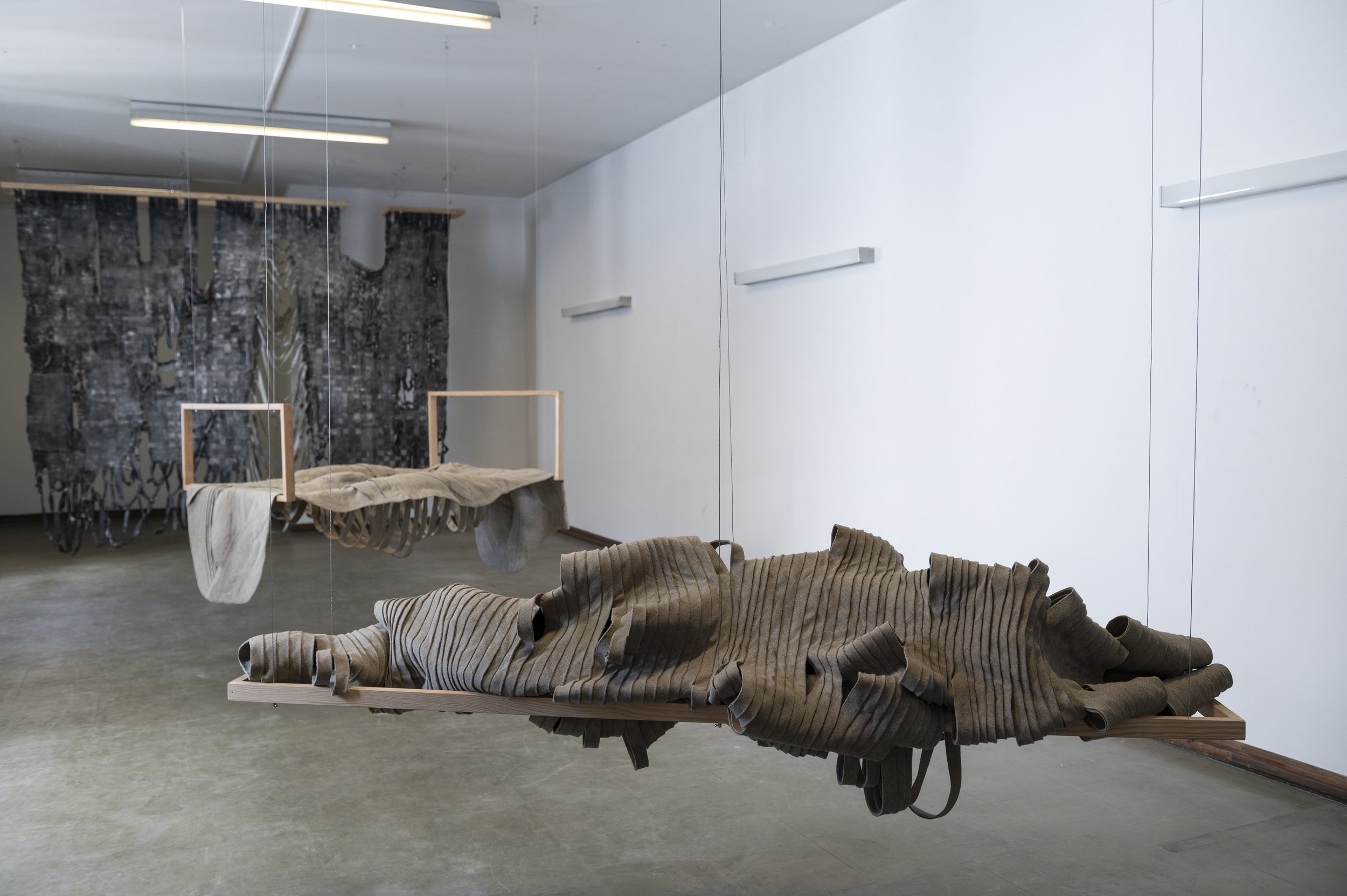


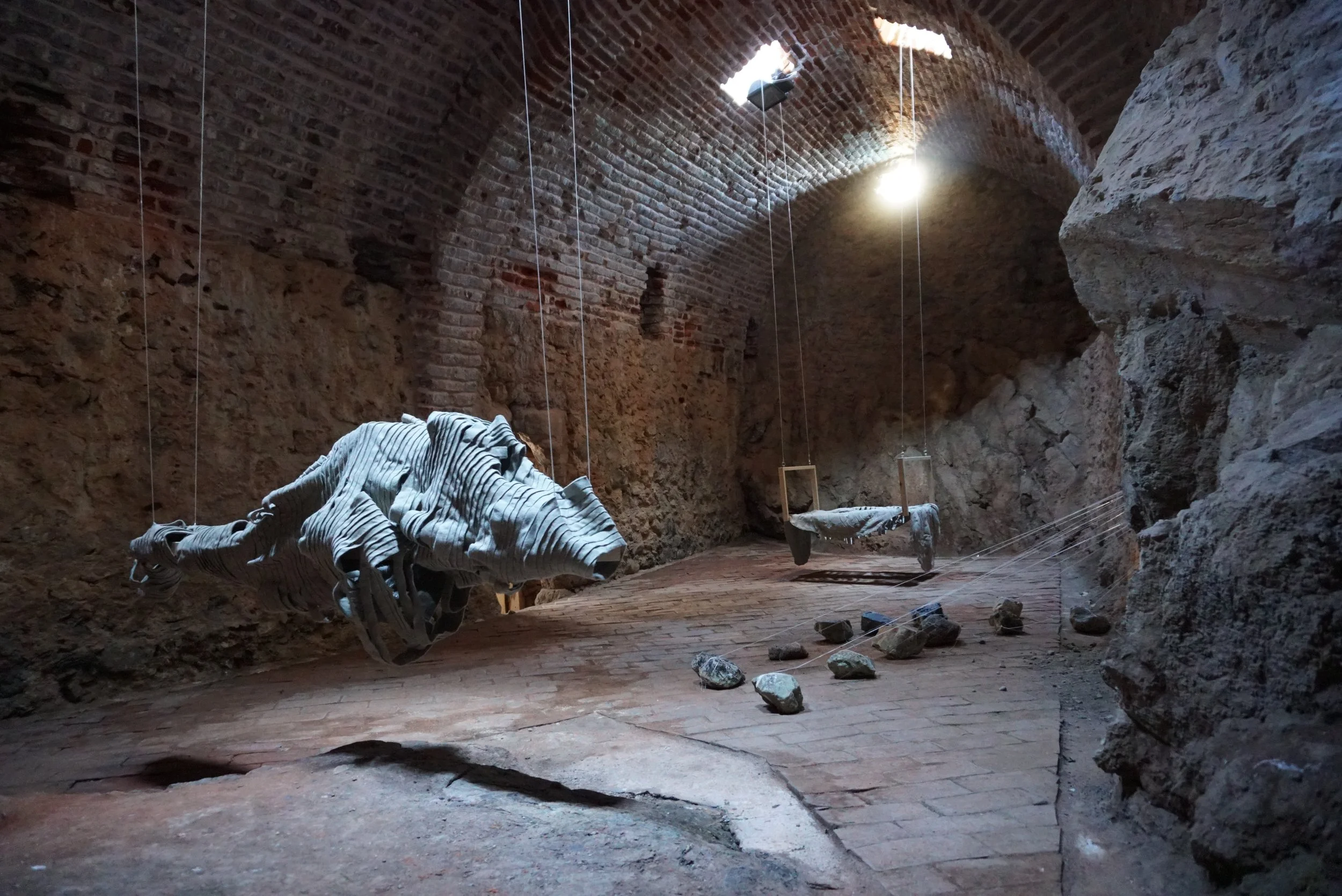
ZRF: "Sleep in the bed that you made II" (2022) was originally created during an Artistique Residency for Contextile in Portugal in 2022. This piece is part of a series of three artworks of which two were shown at Alanya Shipyard in Türkiye. “Sleep in the bed that you made III” (2022) was recently shown at Spaces Between at Florida CraftArt Gallery in St. Petersburg. It’s interesting that the artworks in Sleep in the bed that you made series were shown in spaces that have a relationship with water and movement. How do you envision the interacting stories between your sculpted fabrics and the spaces they occupy?
TM: “Sleep in the Bed That You Made II” embodies the intersection of material, memory, and space. For me, creating site-specific work means immersing myself in the layers of a place—its history, its architecture, its rhythms of daily life. Each site carries a narrative, a memory embedded in its walls, and it’s crucial for me as an artist to honor and respond to these stories through material and form.
Guimarães, where this series originated, is steeped in the history of the textile industry. Its legacy became my canvas, with the rhythm of weaving, the passage of time, and the human touch on cloth serving as threads that tied the work to its surroundings. I envisioned textiles not just as fabric but as skin, bearing the invisible imprints of labor, care, and history—traces left on bed linens, the ghostly outlines of bodies that once rested there.
The linen I used, sourced from the Têxteis Penedo factory, allowed for sculptural manipulation—its coarse weave mirroring the resilience and fragility of human systems. Cotton, on the other hand, carried the weight of industrialization, its ecological and historical footprint woven into its fibers. Together, these materials told stories of labor, of wear, of transformation: hospital bed sheets reimagined as pillowcases, then bandages, each cycle echoing care and resourcefulness.
Water and movement became vital elements in the dialogue between the works and the spaces they occupied. Exhibiting in places like the Alanya Shipyard—a historic hub of maritime trade—added layers of meaning, connecting textiles to the transfer of material knowledge and commerce across the Mediterranean. The dislocated, floating silhouettes of my works engaged directly with these spaces, adapting and evolving as they were placed in new environments.
In Turkey, I extended the series with silk, referencing the city of Lyon, where I now reside, and its rich history of silk production. The Rhône River, like the Mediterranean, is a connector—a thread tying the historical to the contemporary, much like the materials I work with. Silk, with its luminous texture, became a metaphor for fluidity and exchange, while water itself served as a narrative force, carrying textiles and their stories across time and space.
At its core, this project reflects my interest in the interplay between the material, human, and ecological. The works explore how we might rethink our daily actions and materials to leave more thoughtful, healing traces for the future. Linen, with its ancient history and ecological properties, became central to this narrative—a material of resilience, antibacterial properties, and a quiet, enduring presence in human life.
“Sleep in the Bed That You Made II” visualizes the entanglement of histories, the passage of time, and the labor imprinted on the body and material. Each space it inhabits contributes a new chapter, and through these dialogues, I hope to weave a conversation about connection, memory, and the potential for transformation.
Tina Marais. Sleep in the bed that you made III
ZRF: Your choice of material has a deliberate message, for instance that cotton also speaks to water usage and global labor (the legacy of the Atlantic Slave Trade or the environmental and economic impact of fast fashion). Was there a specific reason "Sleep in the bed that you made II" was made of Portuguese Linen?
TM: Yes, material choice is always deliberate in my work, carrying layers of meaning and resonating with the context of the piece. “Sleep in the Bed That You Made II” was created during the Contextile Biennale in Guimarães, Portugal, a city whose identity is deeply interwoven with the history of textile production. The residency was hosted in the former Convent Capuchos, once a hospital, where linen played a crucial role in care, crafted into bed sheets, bandages, and garments. Using Portuguese linen sourced from a local supplier became both a conceptual and material necessity for the work.
Linen, for me, symbolizes resilience and continuity. It is one of the oldest textiles known to humanity, yet it also carries contemporary significance, particularly in its ecological footprint. Compared to cotton, linen requires far less water to produce and has natural antibacterial properties, making it a material of healing and preservation. This connection between the material and its historical usage in the hospital—where worn linen sheets were repurposed into pillowcases and later into bandages—provided a poetic resonance.
By working with linen, I aimed to echo the rhythm of care and reuse embedded in the site’s history. The sculpted forms of the work, evoking body traces and floating silhouettes, became a dialogue with the space and its memory. Linen also reflects the broader themes of the piece: the passage of time, the ecological impact of material production, and the invisible labor imprinted on textiles.
Creating the work in linen sourced from Guimarães allowed me to anchor it in place while exploring the overlapping histories of textile production, care, and labor. This deliberate choice of material not only honored the site’s legacy but also invited viewers to consider the intricate, often invisible, connections between material, environment, and human experience.
ZRF: I really like Le Petit Mort (2022). Do you have a favorite among your pieces?
TM: Thank you for appreciating Le Petit Mort. This was a very personal and intimate series, and was re-exhibited in the Materials, Hard and Soft exhibition, which was purchased by a private collector, in Germany. Each piece and series I create carries its own personal, theoretical, and research-driven meaning. They are deeply connected to specific places, moments in time, and my personal trajectory. It’s difficult to choose just one favorite, as each work holds a part of me and acts as a marker of a period in my life.
That said, one series that remains particularly close to my heart is Unfold, My Skin, exhibited in 2022. The works in that series explored themes of intimacy, memory, and the body in relation to materiality, and they represent a significant moment in my creative journey.
As for a specific piece, Untamed (2017) stands out. It was the first large-scale work I created from recycled denim, marking the beginning of my series Le Flux de l’Or Bleu, which I worked on from 2017 until 2022. This piece carried an immense emotional weight, symbolizing both the end of one chapter in my life and the start of another. Its creation was a transformative process that shaped my approach to material, scale, and storytelling.
Recently, I’ve been delving into a new series that integrates ceramics and textiles, allowing me to explore the interplay of rigid and fluid forms. I’m also preparing for an upcoming exhibition in South Africa, which brings fresh developments and an exciting conceptual framework to my practice.
For me, it’s never about having just one favorite. Each work is a dialogue—a reflection of who I was and what I was exploring at that moment. They are milestones in my evolving practice, each carrying its own resonance and significance.
ZRF: You also work with organic materials like seeds, bones, pistachio shells, and plant or flower stems. Is there another type of material or medium that you wish to work with in the future?
TM: Parallel to my textile arts practice, I also engage in creating permanent public artworks, which are designed for exterior, long-term installations. For these, I collaborate with a team and work with materials like stainless steel, boating cords, and Lexan. These durable materials allow me to explore large-scale sculptural expressions, integrating concepts of permanence and resilience within public spaces.
In my textile practice, I am increasingly drawn to incorporating materials like wood, metal, and ceramics—bringing these elements into dialogue with the softness and tactility of textiles. I find these materials compelling because they extend the narrative of my work, connecting it to the earth, the mineral, the animal, and the vegetable realms. They resonate with the cycles of rebirth and decay, which are central to my exploration of ancient and shifting planetary systems.
This respect for interconnected cycles deeply informs my approach to materials. Whether I’m working with seeds or stainless steel, I am mindful of their origin and their place in the broader ecological and cultural context. Looking forward, I’m excited to continue blending these mediums, finding new ways to honor the rhythms of transformation, and exploring how these diverse materials can coexist in harmony within my artistic language.

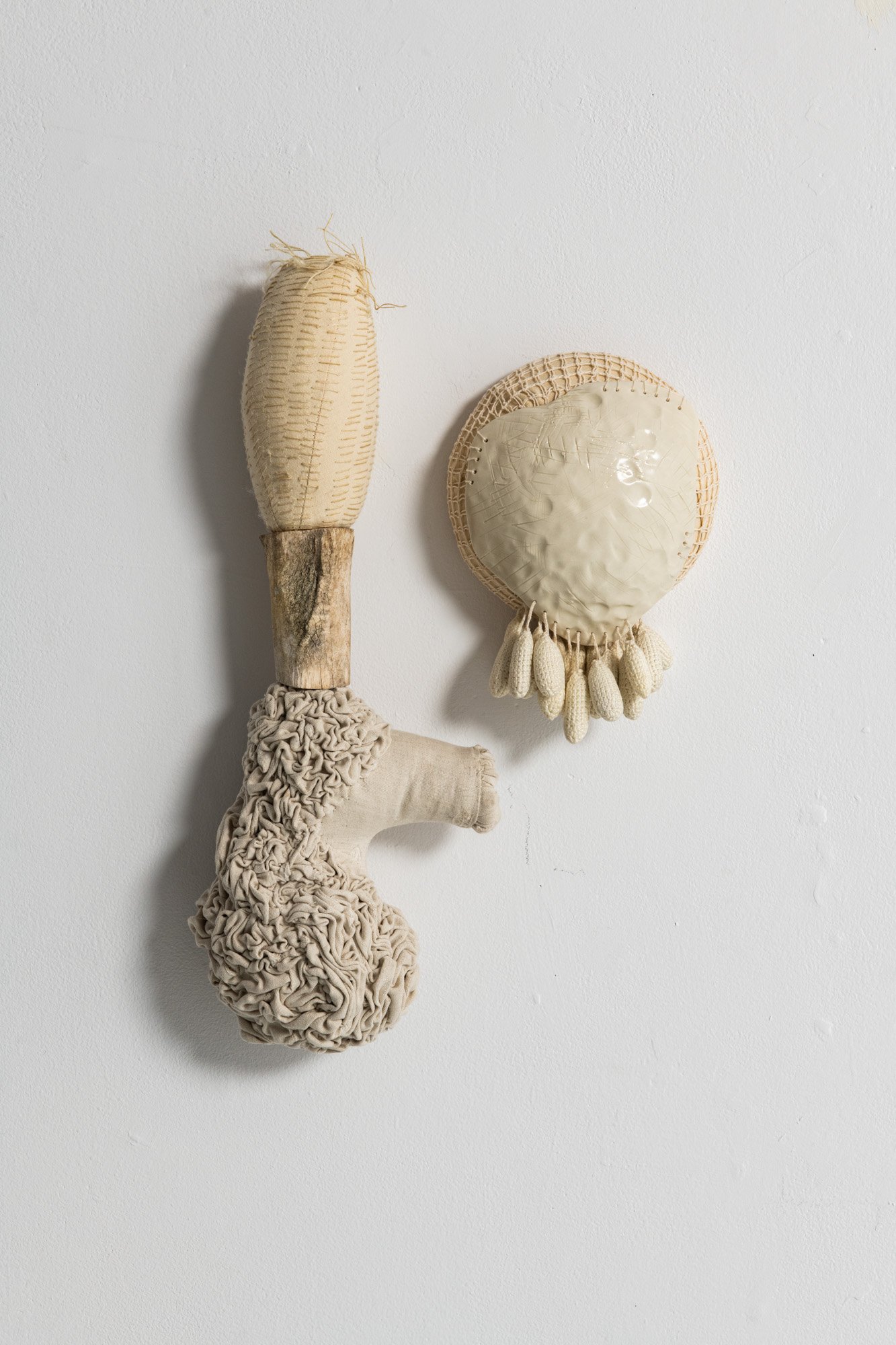
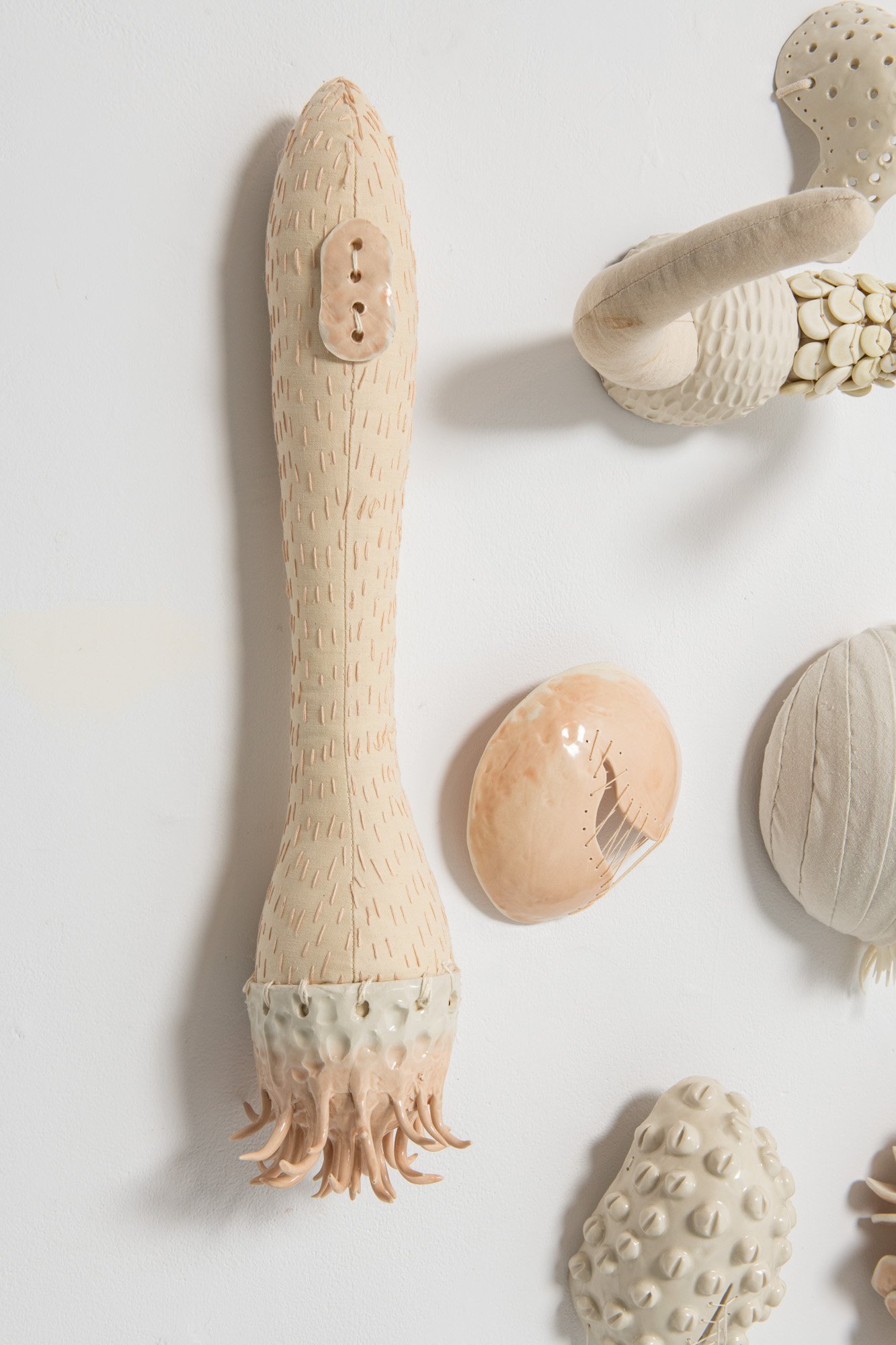
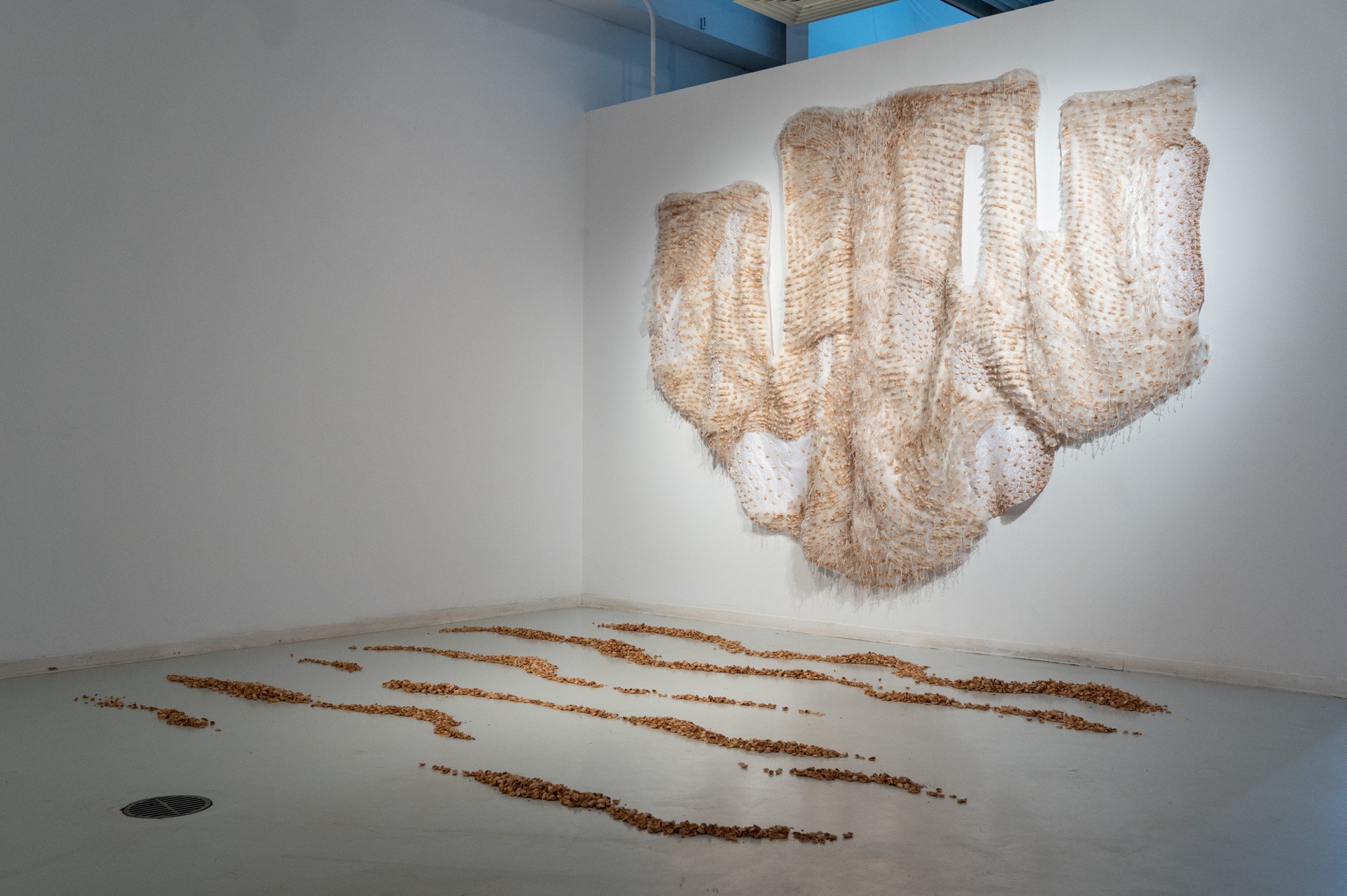
Published July 14, 2025 | Images courtesy of the artist, video by Women in the Arts, Inc.

